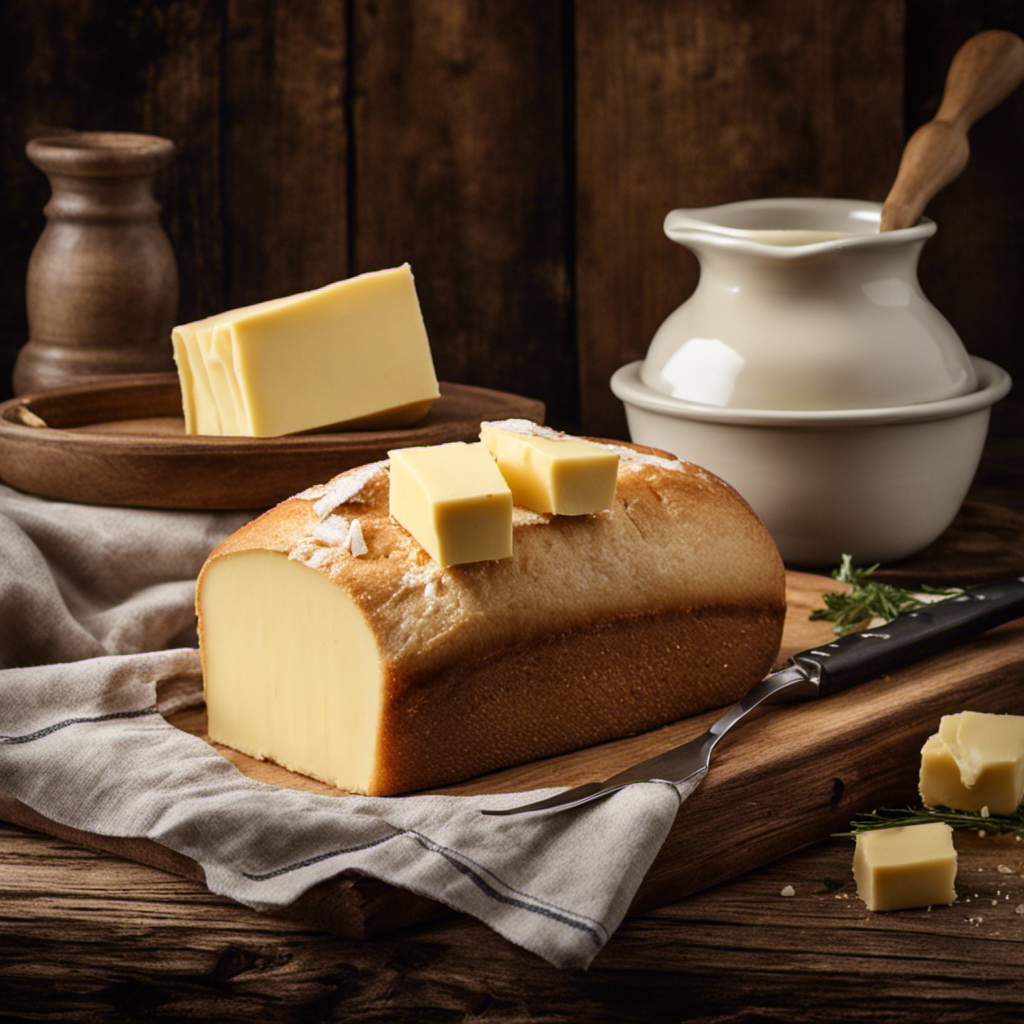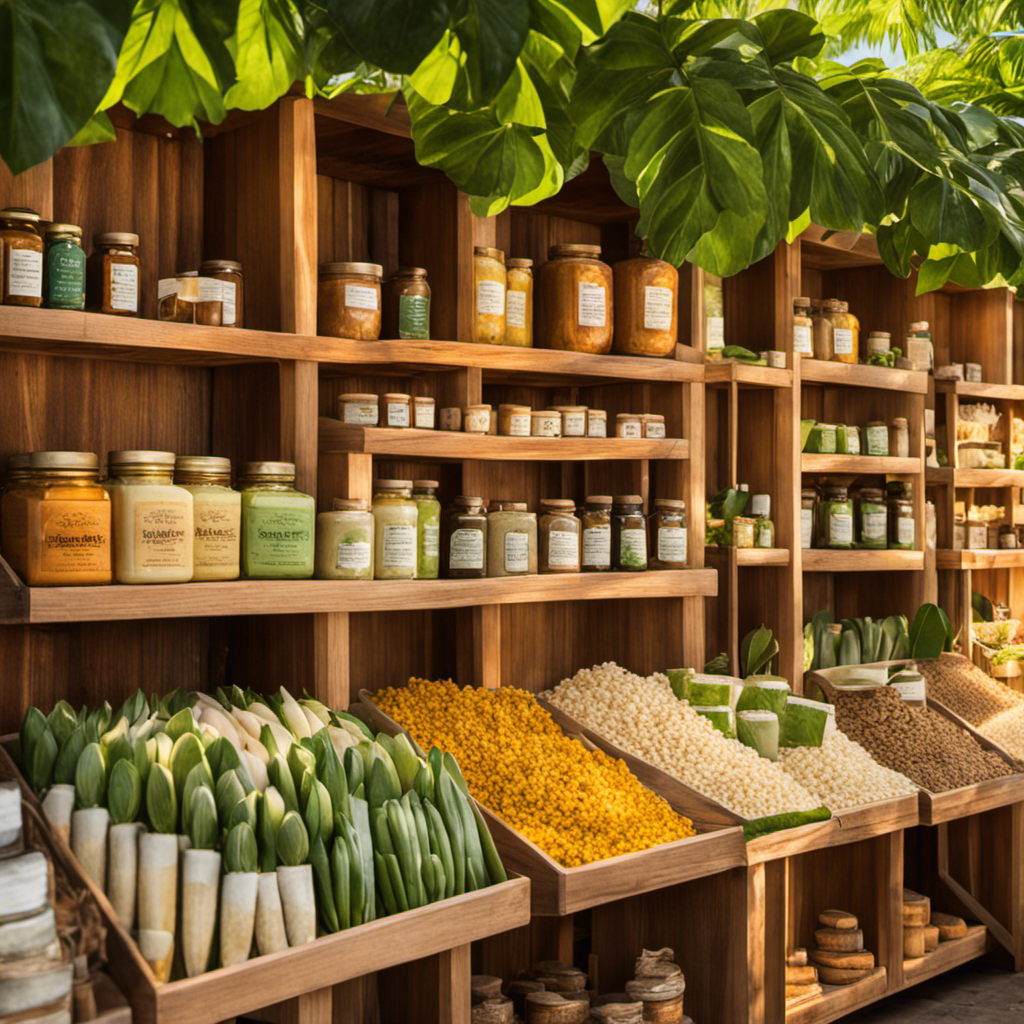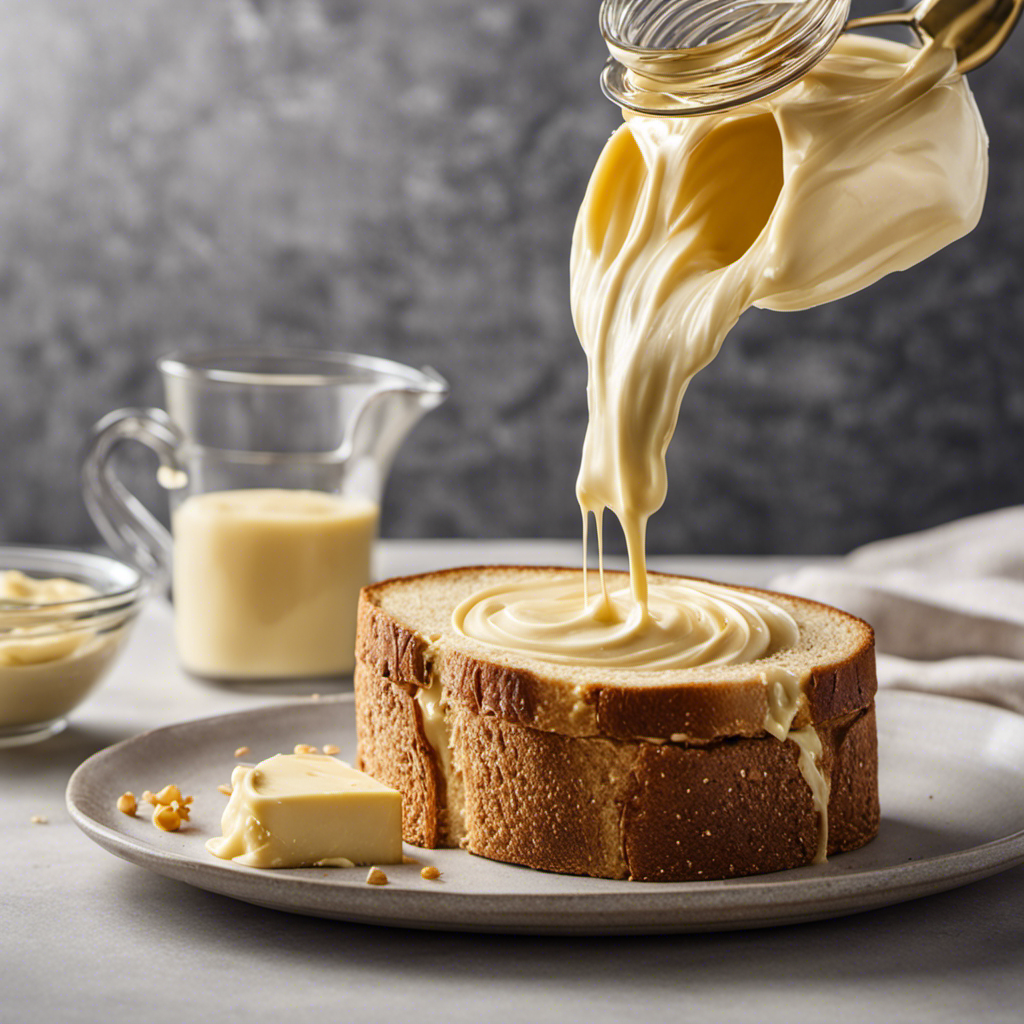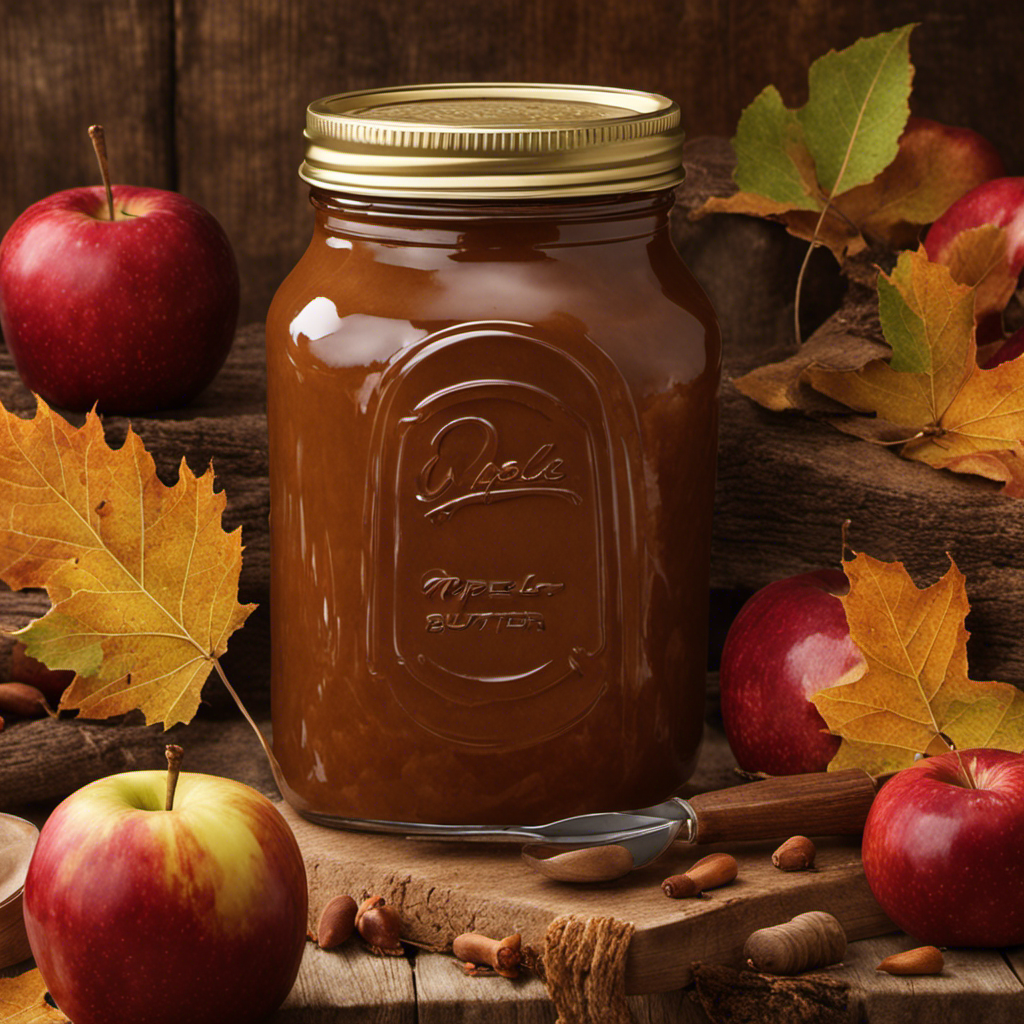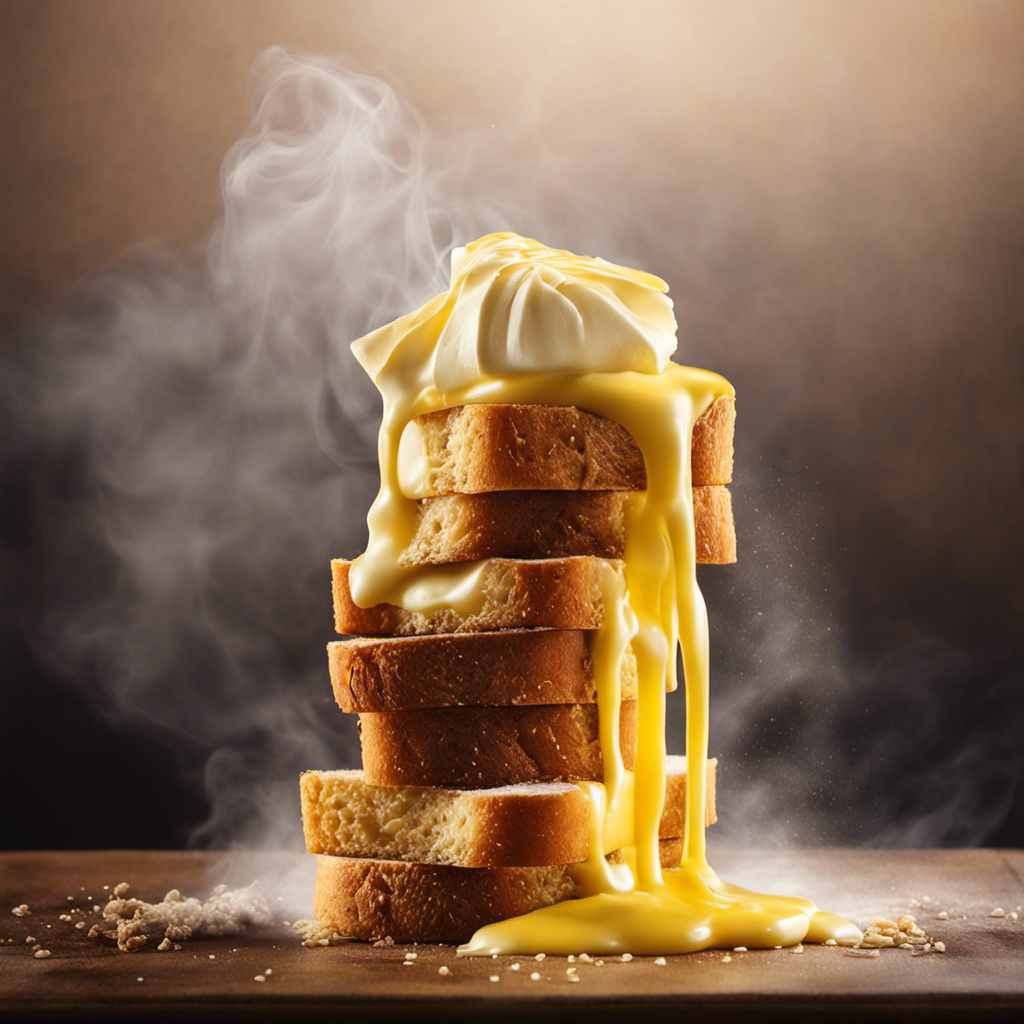Do you enjoy the crispy and decadent taste of a delicious snack?
Well, look no further than butter crackers! These delectable treats have a rich history and come in various mouthwatering flavors.
Whether you enjoy them on their own or pair them with your favorite toppings, butter crackers are the perfect snack for any occasion.
So, grab a box, sit back, and let’s dive into the world of these irresistible treats.
Key Takeaways
- Butter crackers have a rich history dating back to the 19th century and have become a staple in many households.
- Butter is a dairy product made from cream, while margarine is a plant-based spread made from vegetable oils.
- The choice between crunchy and soft butter crackers is a matter of personal preference, with each offering unique benefits.
- Popular brands known for high-quality butter crackers include Ritz, Keebler Club, and Pepperidge Farm.
History of Butter Crackers
Butter crackers have a rich history dating back to the 19th century. These crispy, savory treats have evolved over time to become a beloved snack all around the world.
Originally, butter crackers were made with simple ingredients like flour, butter, and salt. However, as time went on, new flavors and variations were introduced, such as cheese-flavored or whole grain butter crackers.
The cultural significance of butter crackers cannot be understated. They have become a staple in many households, often served with cheese, dips, or enjoyed on their own. Butter crackers are also commonly served at social gatherings and parties, making them a symbol of hospitality and sharing.
Today, butter crackers continue to be enjoyed by people of all ages and are a timeless snack that has stood the test of time.
Ingredients Used in Butter Crackers
When it comes to choosing between butter and margarine, or deciding whether you prefer your crackers to be crunchy or soft, there are a few key factors to consider.
Butter is a dairy product made from cream, while margarine is a plant-based spread made from vegetable oils. Butter tends to have a richer flavor and higher fat content, while margarine is often lower in saturated fat.
As for the texture of your crackers, crunchy crackers provide a satisfying crunch and can be great for dipping, while soft crackers have a more delicate texture and can be easier to spread toppings on.
Ultimately, the choice between butter and margarine, as well as crunchy or soft crackers, comes down to personal preference and dietary considerations.
Butter Vs. Margarine
If you’re trying to decide between butter and margarine, you’ll want to consider their nutritional differences.
Butter is made from animal fat, while margarine is made from vegetable oils.
Butter is higher in saturated fat, which can raise your cholesterol levels, while margarine is often made with healthier unsaturated fats. However, some margarine brands may contain trans fats, which can also raise cholesterol levels.
In terms of taste, butter is known for its rich, creamy flavor, while margarine can have a milder taste.
When it comes to health benefits, butter contains essential vitamins like A, D, E, and K, but margarine is often fortified with additional vitamins.
Ultimately, the choice between butter and margarine depends on your personal preferences and health goals.
Crunchy or Soft?
To achieve the perfect texture for your toast, consider whether you prefer it crunchy or soft.
When it comes to butter crackers, the choice between crunchy and creamy is a matter of personal preference.
Crunchy butter crackers offer a satisfying bite and a crispy texture that pairs well with spreads or dips. They can provide a satisfying crunch that adds an extra layer of enjoyment to your snacking experience.
On the other hand, creamy butter crackers offer a smoother, more melt-in-your-mouth texture. They can be easier to spread and can provide a creamier, more delicate flavor.
Both types of butter crackers have their own unique benefits, so it ultimately comes down to your personal taste and preference.
Whether you prefer the satisfying crunch or the smooth creaminess, butter crackers can be a delicious and versatile snack option.
Different Types of Butter Crackers
There’s a wide variety of butter crackers available, each offering a unique taste and texture. When it comes to flavors, you can find butter crackers in a range of options. Some popular flavors include plain, garlic, herb, and cheese. These flavors enhance the buttery taste and add an extra kick to the crackers.
As for the best store-bought butter crackers, there are a few brands that stand out. Ritz, Keebler Club, and Pepperidge Farm are known for their high-quality butter crackers. They have a perfect balance of buttery flavor and crispy texture.
Whether you enjoy them on their own or with toppings like cheese or spreads, these butter crackers are sure to satisfy your cravings.
Nutritional Value of Butter Crackers
You may be interested to know the nutritional value of these tasty snacks.
Butter crackers come in a variety of flavors, including classic, cheddar, and garlic. They are made from a combination of flour, butter, and seasonings, which gives them their rich taste.
In terms of health benefits, butter crackers can be a good source of carbohydrates and provide a quick energy boost. They also contain a small amount of protein and fiber. However, it’s important to note that butter crackers are high in calories and fat, so moderation is key.
Enjoying them as part of a balanced diet can be a delicious treat.
Now, let’s explore some ways to enjoy butter crackers.
Ways to Enjoy Butter Crackers
When it comes to enjoying butter crackers, there are endless options for tasty toppings that can elevate your snack game.
From classic choices like cheese and cured meats to more adventurous options like avocado or smoked salmon, the possibilities are truly endless.
Additionally, exploring different pairings with spreads such as hummus, cream cheese, or nut butter can create a delicious and satisfying combination that will keep you coming back for more.
Tasty Topping Options
If you’re looking for tasty topping options for your butter crackers, try adding some creamy cheese or a dollop of tangy salsa.
Butter crackers are versatile and can be paired with a variety of flavors. For a savory twist, you can try spreading some cream cheese or goat cheese on top of the crackers. The creamy texture of the cheese complements the buttery flavor of the crackers perfectly.
If you prefer something with a kick, a dollop of tangy salsa can add a burst of flavor to your butter crackers. You can choose from mild or spicy salsa, depending on your preference.
These topping options are easy to prepare and will enhance the taste of your butter crackers, making them an enjoyable snack or appetizer.
Pairings With Spreads
To enhance the flavor of your spread, try pairing it with a slice of tangy pickle or a sprinkle of fresh herbs.
When it comes to cheese, butter crackers make for a delightful combination. The rich, buttery taste of the cracker complements the creamy and savory flavors of different types of cheese. You can experiment with various pairings, such as sharp cheddar with a hint of honey, or creamy brie with a drizzle of fig jam.
Another way to elevate your butter cracker experience is by trying out creative recipes. For example, you can top your crackers with smoked salmon and a dollop of cream cheese, or spread some pesto and sprinkle grated Parmesan on top.
These combinations will add a burst of flavors to your butter crackers, making them even more enjoyable.
Homemade Butter Cracker Recipes
You can find delicious homemade butter cracker recipes online. Making butter crackers at home allows you to experiment with different variations and flavors, giving you control over the ingredients and ensuring a fresh and tasty snack. Here are some benefits of making butter crackers at home:
| Benefits | Description |
|---|---|
| 1. Control over ingredients | By making butter crackers at home, you have the ability to choose high-quality ingredients and avoid additives or preservatives often found in store-bought options. |
| 2. Customizable flavors | You can personalize your butter crackers by adding herbs, spices, or other ingredients to suit your taste preferences. |
| 3. Freshness | Homemade butter crackers are always fresh, ensuring a crispy texture and delicious flavor. |
| 4. Cost-effective | Making your own butter crackers can be more economical in the long run compared to buying pre-packaged ones. |
With these homemade cracker variations, you can enjoy a healthier and tastier snack while knowing exactly what goes into your crackers. So why not give it a try and start creating your own batch of buttery goodness?
Popular Brands of Butter Crackers
When it comes to popular brands of this crispy snack, there are several options available in the market. Butter crackers have become a favorite among snack enthusiasts, and their popularity has led to a wide variety of flavors and brands to choose from.
Here are some popular brands of butter crackers for you to consider:
- Ritz: Known for their rich buttery flavor and flaky texture, Ritz butter crackers are a classic choice.
- Keebler Club: These butter crackers offer a slightly salty taste and a satisfying crunch, making them perfect for snacking.
- Pepperidge Farm: Offering a range of flavors like cheddar and garlic, Pepperidge Farm butter crackers provide a delicious twist on the traditional buttery taste.
With their irresistible taste and versatility, butter crackers are an excellent snack option for any occasion. Whether you enjoy them plain or pair them with your favorite dips and spreads, these crackers are sure to satisfy your cravings.
Conclusion
So there you have it, now you know all about butter crackers!
From their humble beginnings to the wide variety of flavors and textures available today, butter crackers have become a beloved snack for many.
Whether you enjoy them on their own, with cheese, or as a base for your favorite toppings, butter crackers are a versatile treat that can be enjoyed in countless ways.
So next time you’re in the mood for a tasty and satisfying snack, reach for a box of butter crackers and indulge in their deliciousness. You won’t be disappointed!

